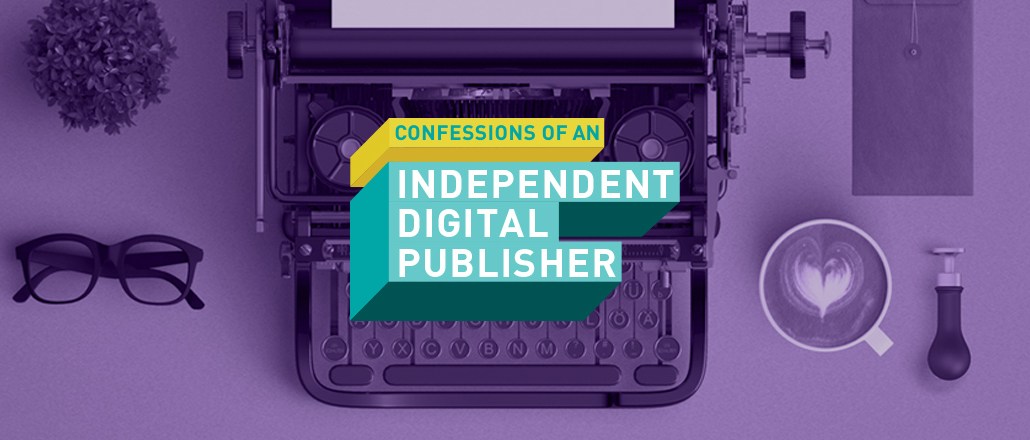‘2017’s going to be a bloodbath’: Confessions of a beleaguered independent publisher

This article is part of our Confessions series, in which we trade anonymity for candor to get an unvarnished look at the people, processes and problems inside the industry. More from the series →
Surviving as a digital publisher is hard enough, but it’s even more so for independent, pure-play digital media companies that don’t have massive scale or other business lines to lean on. For the latest installment in our anonymous Confessions series, we talk to an exec at an independent publisher who worries about making it in a world where most of the ad dollars are going to Google and Facebook.
What worries you the most as an independent publisher these days?
This duopoly is essentially killing publishing. There’s a Faustian bargain we’ve all entered into because the platforms are responsible for our livelihood but they’re using our content to shore up their dominant position of owning all the data, owning all the audience. You add in Snap, it’s another 5 percent. Amazon, it’s another 5 percent. You’re looking at an increasingly smaller slice of the pie. Brands that are independent that aren’t well funded or are running out of that cash will be squeezed.
What’s most frustrating about working with Facebook?
They’re forcing publishers to pay for sponsored content. It’s definitely an added pressure. If it’s great content, it should be surfaced. Facebook is playing the same card that Google did where they released the same stream of tweaks to its algorithm, to get [brands] to buy traffic through SEM.
When it comes to their dealings with publishers, it also seems like the platforms have picked their favorites.
Whether it’s The New York Times being subsidized by Facebook to pay for content or the Snapchat Discover kind of exclusivity, there’s no rhyme or reason other than some sort of favoritism that’s handed down for no reason. The randomness of the favored child is that challenge.
What else do you worry about?
The cost structure of digital display. The agencies are requiring 100 percent viewability. So if we sell a $10 CPM and deliver 70 percent viewability, which is the best you’re going to be able to do, that takes your $10 CPM and moves it to a $6 CPM. Display as a whole has really shrunk as a result of viewability. 2017’s going to be a bloodbath for independent publishers.
Native advertising was once supposed to be the savior of publishing. What happened?
There’s no universal methodology for measuring success. Some of the challenges are organizational. How do you organize your business from ad ops to content. How do you scale it when it’s custom. It’s lower margin than display. More and more you’re seeing brands depend on Facebook and Google. We need to get marketers to understand it’s not just about those two.
What else do you wish advertisers and agencies understood?
The comScore tomfoolery that brand marketers should be more adept at spotting. There’s a lot of [publishing] brands that don’t have a clean comScore proposition because of traffic assignment letters. Whatever you put on the slide, they take as gospel. It’s not their fault; they’re overworked and underpaid. It’s definitely getting better, but there’s still a lot of falsities that are perpetuated.
What about the content recommendation engines — don’t they pay big checks to publishers who run their widgets?
The content recommendation engines represent that underbelly of the internet. It’s not a good user experience. It’s just a lot of crap.
Now there’s Snapchat competing for ad dollars and publishers’ content in its Discover section. Is that good for publishers?
It’s a much more exclusive platform than Instagram, Facebook or YouTube. But they have more empathy for publishers and want to see them succeed. Their walled garden is being built on editorially curated content rather than user-generated content. The way they’re adding partners is highly curated and with deference to each publisher’s unique value to the platform. They’re looking for verticals to fill, not to be like Lord of the Flies.
But they’re switching to a licensing-fee model from an ad sales model. How will that affect Discover publishers?
It becomes a revenue stream but it’s one less story you can tell as a brand if you’re coming in for a meeting with a marketer. So I think there’ll be a gravitation to Instagram because it doesn’t have that issue. In 2017, you’ll see a civil war between Instagram and Snapchat.
Which other platforms are getting less attention from your company?
I don’t know that Twitter has ever been a hugely monetizable solution, so I don’t think it’s been used as heavily as the other platforms. There’s a lot more on Facebook and Instagram than Periscope. Twitter is not as compelling as the other platforms.
More in Media

A timeline of the major deals between publishers and AI tech companies in 2025
Here’s a list of all the major deals signed between publishers and AI tech companies in 2025.

No playbook, just pressure: Publishers eye the rise of agentic browsers
For the bulk of publishers, Google is, as ever, the one to watch. It’s already got agentic features within its Chrome browser, but that’s the tip of the iceberg, some say.

The biggest SEO lessons in 2025 for publishers
KPIs are changing, more AI search data is becoming available, and publishers are looking beyond search to grow their audiences and revenue.





